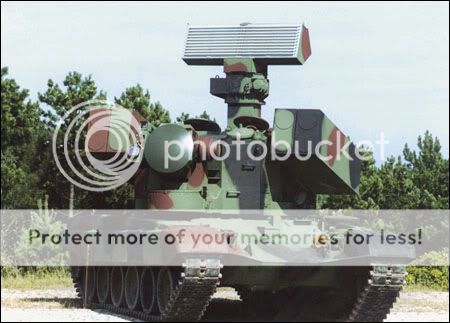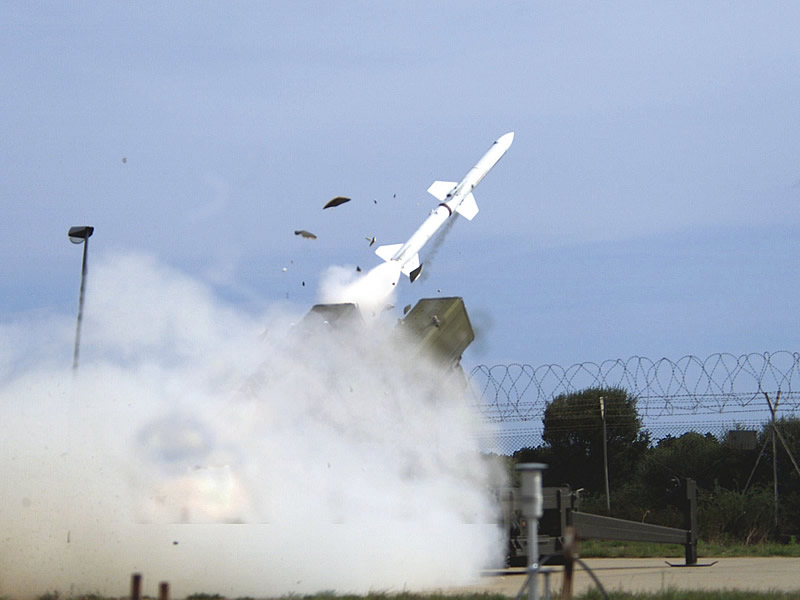FT-2000
Country: China
Basing: Land [/B]
Details
In a report to Congress on May 28, 2004, the U.S. Department of Defense highlighted the major improvements that China has made to its air and missile defense systems over the past few years, including “[the] development of an antiradiation SAM [surface-to-air missile], most likely intended to target AWACS [Airborne Warning and Control System] aircraft and standoff jamming platforms.”(1)
The report was referring specifically to the FT-2000, a Chinese anti-radiation surface-to-air missile system designed to counter electronic jamming aircraft, AWACS aircraft, and other air radiation wave targets. Developed and manufactured by the China National Precision Machinery Import and Export Corporation (CPMIEC) during the late 1990s,
the FT-2000 is also believed to be capable of destroying tactical ballistic missiles, similar to the U.S. Patriot and the Russian S-300P systems on which it is based.(2) At present, two versions exist, the mobile FT-2000 and the fixed-based FT-2000A.(3)
The FT-2000 is the direct result of a concerted effort by China to eliminate an inherent vulnerability in medium- and long-range surface-to-air missiles: jamming. For decades, air and missile defense systems like the Patriot and the S-300P have been susceptible to advanced techniques designed to confuse or immobile their interceptor missiles and keep them from reaching their targets. One of the most common jamming devices is S- and C-band airborne noise. If used properly, this and other deception mechanisms lead to what is known as the “suppression of enemy air defenses” and allows attacking aircraft and missiles to proceed to their targets without challenge.(4)
The FT-2000 was designed to neutralize and counter these airborne jamming devices. It contains a passive radar target seeker programmed to detect the specific electromagnetic signals emanating from its target. Essentially, the FT-2000 uses its target’s own jamming frequencies against it. In addition, the FT-2000 has a passive homing system that does not transmit electromagnetic waves, thus minimizing the chances that its enemies will detect it in time.(5) The system is equipped with modified HQ-9 interceptor missiles, each of which is 6.8 meters long, 0.47 meters in diameter, and has a launch weight of 1,300 kilograms.
The HQ-9 missiles give the FT-2000 a range of 12 to 100 kilometers and an operating altitude of 3 to 20 kilometers. 
The mobile system is transported and launched on an 8 X 8 cross-country launcher with four canisters that resemble those used by the S-300P.(6)
In addition to the mobile FT-2000, China has developed a fixed-based variant, the FT-2000A. According to a recent Chinese sales brochure, the FT-2000A uses a highly-modified HQ-2 missile that has been equipped with passive radio frequency homing seekers. Each HQ-2 is armed with a 60-kilogram fragmentation warhead and has a range of 60 kilometers and a maximum altitude of 18 kilometers. Reports indicate that each FT-2000A battery consists of 12 missile launchers, each containing one missile, and a central control station. The central control station has one master passive sensor and three auxiliary passive sensors. The four sensors are capable of triangulating on electromagnetic signals in the 2- and 6-GHz frequency range, which covers most AWACS aircraft and other air radiation wave targets, thus earning it the nickname “AWACS killer.”(7)
In addition to its role as an anti-radiation missile system, the FT-2000 also has advanced capability against tactical ballistic missiles, although this point is seldom mentioned. As Richard D. Fisher, Jr. has pointed out, Chinese officials at the 1998 Zhuhai Air Show—shortly after plans for the FT-2000 had been unveiled—stated that the FT-2000 was being developed into an active-guided missile that eventually would have the ability to shoot down short- and medium-range ballistic missiles.(8) Since the FT-2000 is based on comprehensive systems such as the U.S. Patriot and the S-300P, it is no surprise that it too has anti-missile capabilities.
In October 2003, it was reported that China had closed a deal with its neighbor, Pakistan, to supply the latter with an unspecified number of FT-2000 missiles to counter India’s early warning capabilities. The China-Pakistan deal followed India’s own arrangement with Israel and Russia to install three Israeli Phalcon AWACS on Ilyushin Il-76 freighter aircraft, thus giving it an airborne early warning system.(9) According to various news sources, shortly after India announced its acquisition of the Phalcon radars, Air Chief Marshal Kaleem Saadat, the head of Pakistan’s air force, visited China and conveyed Pakistani President Gen. Pervez Musharraf’s wish to purchase an unspecified number of FT-2000s.(10)
The recent China-Pakistan arrangement may just be an attempt to maintain the delicate balance of power between India and Pakistan, both of which possess nuclear weapons. Yet according to an article published in Malaysia in January 2003, the People’s Liberation Army is eager to export the FT-2000 around the globe.(11) It is entirely possible that “AWACS killer” air and missile defense systems like the FT-2000 will soon proliferate throughout Asia, Europe, and the Middle East, a development that would introduce a multitude of strategic problems for the U.S. and its allies


















 The mobile system is transported and launched on an 8 X 8 cross-country launcher with four canisters that resemble those used by the S-300P.(6)
The mobile system is transported and launched on an 8 X 8 cross-country launcher with four canisters that resemble those used by the S-300P.(6)
